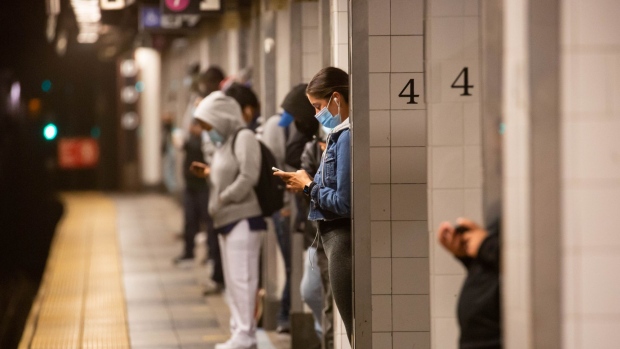Sep 25, 2020
Covid Immunity Remains Low With Under 10% of U.S. Adults Exposed
, Bloomberg News

(Bloomberg) --
Fewer than one in ten Americans have antibodies to the virus that causes Covid-19, indicating relatively low rates of immunity to the pathogen that has killed more than 200,000 people in the U.S.
Just 8% of more than 28,000 blood samples tested in July had antibodies to SARS-CoV-2, according to research published in The Lancet medical journal. The samples, taken from patients undergoing blood-cleaning dialysis, correlate to about 9.3% of all adults nationwide, the study said.
The results are a blow to hopes that immunity may be reaching a level in the population that will help prevent the virus’s spread. While President Donald Trump has said the country may be weeks from reaching the level where herd immunity might take hold, that would require antibodies in at least half the population, if not much more.
“Despite high rates of Covid-19 in the United States, the number of people with antibodies is still low and we haven’t come close to achieving herd immunity,” said Julie Parsonnet, a professor of medicine at Stanford University and one of the study’s authors. “Until an effective vaccine is approved, we need to make sure our more vulnerable populations are reached with prevention measures.”
Researchers from Stanford and Ascend Clinical, a commercial facility that receives blood samples from dialysis centers across the U.S., devised a way to estimate rates of previous Covid infection nationwide by testing leftover samples taken monthly from patients with kidney disease.
It’s painless and economical because dialysis patients get routine testing. The approach had the added benefit of getting insights from people who are often left out of surveys because of their health conditions and may be hard hit by the infection, including the elderly, minorities and the poor. The result is the largest snapshot yet available of coronavirus-fighting antibody levels in a specific patient group across the country.
Those who live in urban centers, minority neighborhoods or poorer communities were more likely to have antibodies to the virus, the study found. But the vast majority of those who most likely had been infected had no idea. Fewer than 10% had been diagnosed with tests designed to spot the virus or the proteins it produces.
There was also significant variation by region, with antibodies found in 3.5% of those in the U.S. West and more than 27% for those in the hard-hit Northeast. The levels exceeded those seen in earlier, similar studies. Wuhan, the Chinese city where the virus was first recognized, had a prevalence rate of less than 4% in March and April. In New York City, the epicenter of the early U.S. outbreak, 14% of health-care providers tested positive for antibodies as of June.
Keeping Track
The study design will help the researchers track dialysis patients over time, said lead author Shuchi Anand, director of Stanford’s Center for Tubulointerstitial Kidney Disease. Investigators will be able to determine when patients start producing antibodies, how long they last and whether they offer prolonged protection against the virus, she said. It’s possible the immune system could have a memory of a previous infection that would help protect them even if their antibody levels have waned, she said.
Because dialysis treatment is covered by Medicare, centers that provide it see a broad swath of the American public, Anand said.
“We are surveying a population that we really care about, as they are higher risk,” she said. “They are also typically hard to reach.”
The study did have limitations: dialysis patients are less likely to work or get outside of their homes as often as healthier people, which could have reduced their exposure to the virus. On the other hand, they may need to take public transportation to their dialysis center, a health care facility which itself could increase risk. They also have a higher mortality rate, meaning those who were positive may have died and thus wouldn’t have counted as positive in the study.
Regardless of the drawbacks, following this group of people over time could provide valuable insights, said Barnaby Flower and Christina Atchison from Imperial College London in an editorial that accompanied the report. The information gained from the tests could help determine how long the immune response to the virus lasts, whether it provides protection against repeat infection and how broadly the outbreak has spread across the U.S., they said.
©2020 Bloomberg L.P.